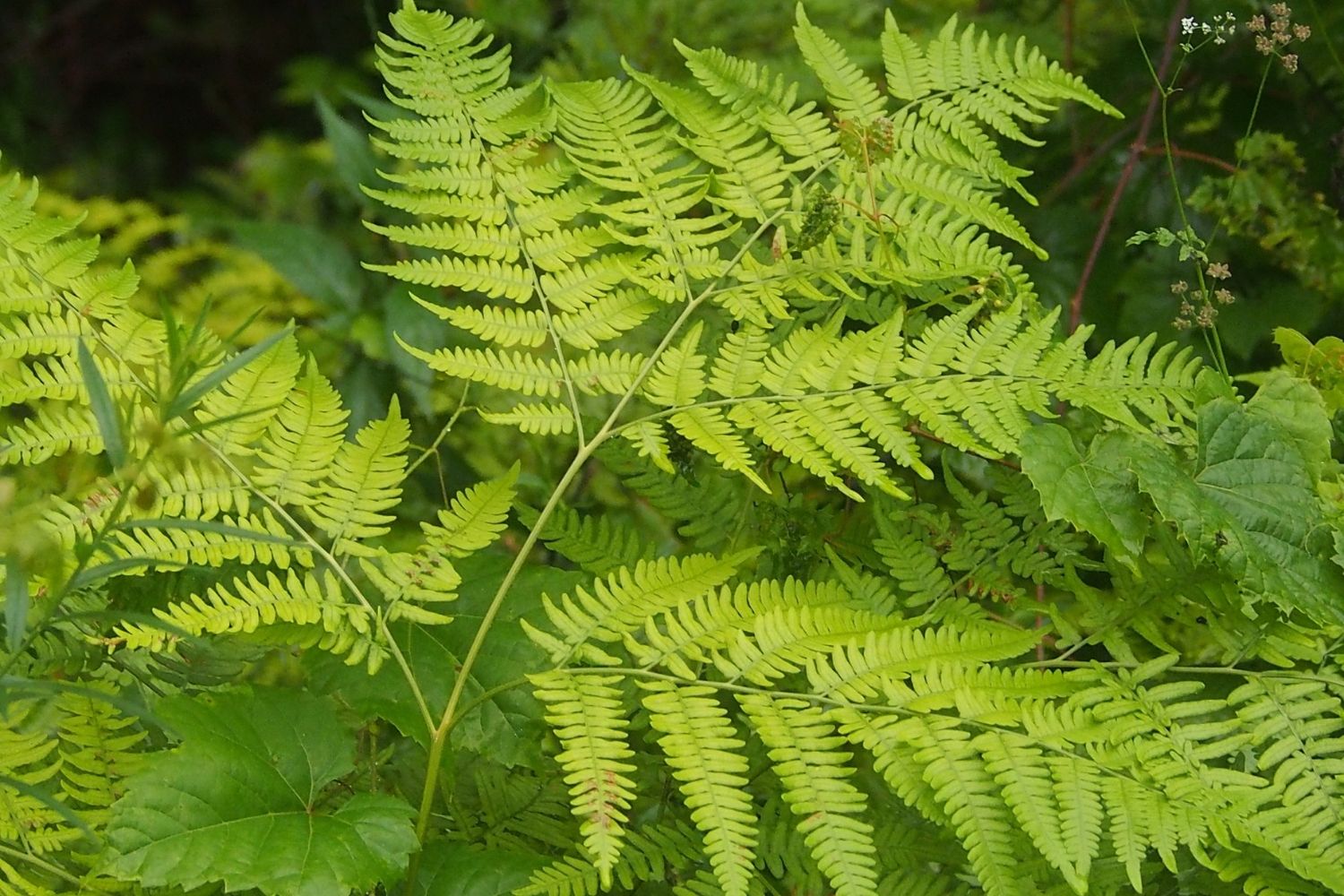
Bracken fern is one of the most widespread plants on Earth, thriving in diverse environments from woodlands to grasslands. But what makes this plant so fascinating? Bracken ferns have a rich history, unique characteristics, and even some surprising uses. Did you know that these ferns can grow up to 10 feet tall? Or that they have been used in traditional medicine for centuries? Despite their beauty, bracken ferns also have a darker side, containing toxins that can be harmful to both animals and humans. Whether you're a plant enthusiast or just curious, these 30 facts will give you a deeper understanding of this remarkable fern.
What is Bracken Fern?
Bracken fern, scientifically known as Pteridium aquilinum, is a type of fern found in many parts of the world. This plant is known for its large, triangular fronds and its ability to thrive in various environments.
- Bracken fern is one of the most widespread ferns globally, found on every continent except Antarctica.
- The plant can grow up to 3 meters tall in optimal conditions, making it one of the tallest ferns.
- Bracken fern has a unique underground rhizome system that allows it to spread rapidly.
- The fronds of bracken fern are divided into smaller leaflets, giving them a feathery appearance.
- This fern is known for its resilience, often growing in areas where other plants struggle to survive.
Historical Uses of Bracken Fern
Throughout history, bracken fern has been used for various purposes by different cultures. Its versatility has made it a valuable resource.
- In ancient times, bracken fern was used as a food source, with young shoots being cooked and eaten.
- The plant was also used in traditional medicine to treat ailments such as coughs and skin conditions.
- Bracken fern fronds were often used as bedding material due to their softness and availability.
- In some cultures, the fern was used as a natural dye for fabrics.
- The ashes of burnt bracken fern were used as a source of potash for making soap.
Ecological Impact of Bracken Fern
Bracken fern plays a significant role in its ecosystem, but it can also have some negative effects.
- The plant provides habitat and food for various wildlife, including insects and small mammals.
- Bracken fern can dominate landscapes, outcompeting native plants and reducing biodiversity.
- The fern's dense growth can prevent soil erosion in some areas.
- However, it can also be toxic to livestock if ingested in large quantities.
- Bracken fern contains carcinogenic compounds that can pose health risks to humans and animals.
Interesting Facts About Bracken Fern
There are many fascinating aspects of bracken fern that make it a subject of interest for botanists and nature enthusiasts.
- The plant has a unique method of reproduction, using spores instead of seeds.
- Bracken fern can survive in a wide range of environments, from woodlands to open fields.
- The plant has been known to survive wildfires due to its underground rhizome system.
- Bracken fern is one of the few plants that can grow in soils with low nutrient levels.
- The fern's fronds can change color with the seasons, turning a golden brown in autumn.
Bracken Fern in Modern Times
Even today, bracken fern continues to be a plant of interest for various reasons.
- Researchers study bracken fern to understand its potential medicinal properties.
- The plant is sometimes used in landscaping for its aesthetic appeal.
- Bracken fern is being investigated for its potential use in phytoremediation to clean contaminated soils.
- The fern's ability to grow in poor soils makes it a candidate for land reclamation projects.
- Some cultures still use bracken fern in traditional dishes, despite its potential health risks.
Conservation and Management of Bracken Fern
Managing bracken fern populations is crucial to maintaining ecological balance.
- Conservation efforts focus on controlling the spread of bracken fern in areas where it is invasive.
- Mechanical removal and controlled burning are common methods used to manage bracken fern growth.
- Herbicides are sometimes used, but they can have negative effects on surrounding vegetation.
- Understanding the plant's growth patterns helps in developing effective management strategies.
- Public awareness campaigns educate people about the potential risks and benefits of bracken fern.
Final Thoughts on Bracken Fern
Bracken fern is more than just a plant; it's a fascinating piece of nature's puzzle. From its ancient origins to its unique survival tactics, this fern has a lot to offer. Its ability to thrive in various environments and its historical uses in medicine and food make it a plant worth knowing. However, it's also important to remember its toxic properties and the potential risks it poses to livestock and humans. Whether you're a nature enthusiast, a gardener, or just curious, understanding bracken fern adds a layer of appreciation for the natural world. So next time you come across this plant, you'll know there's more to it than meets the eye. Keep exploring, stay curious, and never stop learning about the wonders around us.
Was this page helpful?
Our commitment to delivering trustworthy and engaging content is at the heart of what we do. Each fact on our site is contributed by real users like you, bringing a wealth of diverse insights and information. To ensure the highest standards of accuracy and reliability, our dedicated editors meticulously review each submission. This process guarantees that the facts we share are not only fascinating but also credible. Trust in our commitment to quality and authenticity as you explore and learn with us.
